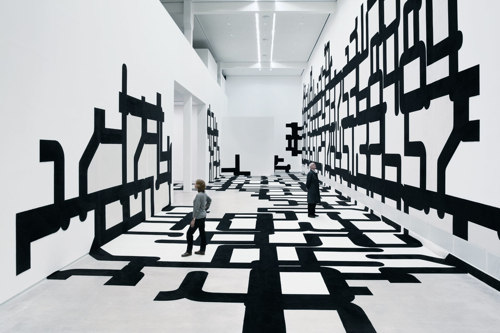wanderlust
The Breakthrough of a Prophet

As we know, a prophet is not without honor except in his own country. For the longest time, this was also true for Jürgen Mayer H. His futurist space structures are admired literally across the entire European continent, from Andalusia up to the Ural. In Seville, Metropol Parasol – his spectacular, mushroom-shaped marketplace – was completed this year. It’s a huge walk-in architectural sculpture that stands out in its surrounding in the historical city center. In Berlin, the native Swabian’s workplace, however, the rigid architectural paradigm of “critical reconstruction” denied commissions to all progressive architects, including him.
Jürgen Mayer H’s architecture is art, design and communication
For several months, however, it has been possible to admire a genuine Jürgen Mayer H. on Johannisstraße in Berlin-Mitte. The organic window openings in the façade of lamella-like curtains deliberately clash with the standard punctuated stone façades typical to Mitte.
His show in the Berlinische Galerie offers a similar provocation. As part of its series of site-specific interventions by contemporary, genre-crossing Berlin architects, the museum is giving Jürgen Mayer H. his own interdisciplinary solo exhibition.
However, if you come expecting models and plans, you’ll be disappointed. “Jürgen Mayer H. is one of the few German architects who also define themselves explicitly as artists,” says Dr. Thomas Köhler, director of the Berlinische Galerie. Or as Jürgen Mayer H. himself puts it: “Our architecture is always art, design and communication as well.”
A cathedral for the digital age
“Rapport”, located within the 30 feet high entrance hall, features a spatial intervention unprecedented in its scale. Industrial carpet patterns cover the floor and walls. The basis of this work are data protection patterns which are used, for example, on the inside of envelopes. According to Jürgen Mayer H., all his projects share these patterns as a common starting point.
The architect is thrilled by their function as a bridge – and at the same time an obstacle – between the private and the public spheres. That’s not surprising, since this special relationship is a major concern of all contemporary architecture. But how exactly do the shapes of his buildings derive from these patterns? That will forever remain Mayer H.’s secret, for there is no apparent logical link of any kind. The same is true for the other objects in his current show, three-dimensional models that translate the two-dimensional patterns into concrete forms. He’s obscurely playing with the technically feasible, nothing more. His carpet-installation, however, is convincing at first sight, without any need for explanations. It’s a manifest symbol of the pervasive digitalization of our daily lives. Jürgen Mayer H. has created a monumental cathedral for the digital age.
RAPPORT Experimental spatial structures by J. MAYER H., Berlinische Galerie, until 09.04.2012
Be the first to write a comment.
Your feedback
